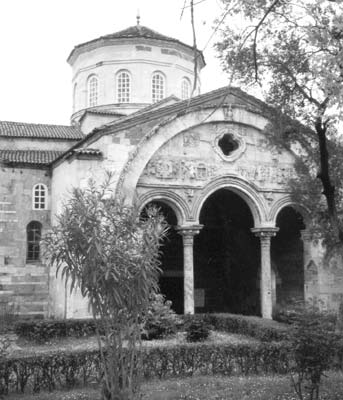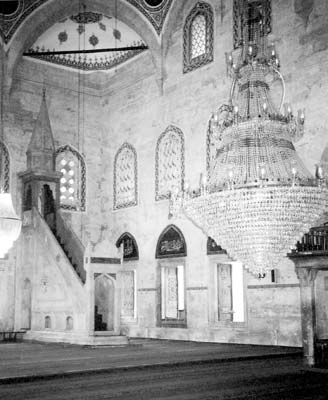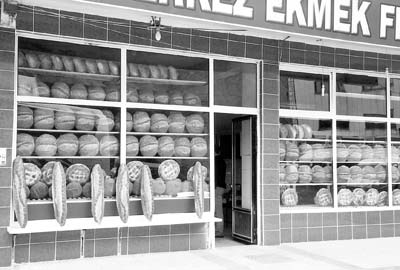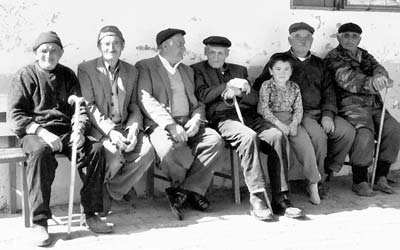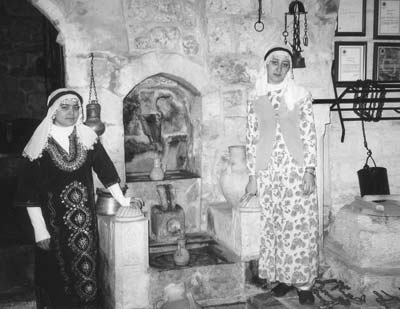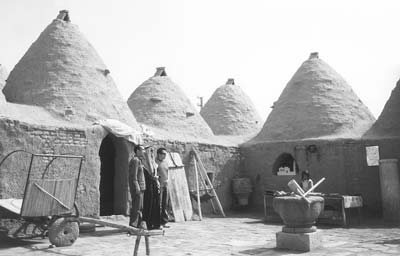A month-long look at Turkey
by Judith Anshin, Contributing Editor
Bora Özkök of Cultural Folk Tours has such passion and enthusiasm for the land of his birth, it’s downright contagious. I certainly was infected after spending 29 days traveling 5,500 miles with him from mid-April to mid-May 2006. In the early ’70s I spent time in Istanbul and Ephesus, but this trip, a clockwise circle tour beginning in Istanbul, exposed me to the Asian part of Turkey. By its end I felt I had really come to know, experience and love the country and her people.
Is it safe?
Because of the war in Iraq, many people feel Turkey is too dangerous to visit. However, even in the Kurdish areas and border area with Iran, I felt completely safe. Because it is a Muslim country, many people lump Turkey in with Iran, Afghanistan, Iraq and the other Muslim countries in the area. However, Atatürk, the father of modern Turkey, established it as a secular country. There are no ayatollahs or mullahs, no required burqas or chadors; in short, it looks little different than any of its European neighbors.
Of course, there are many mosques and one will often hear the calls to prayer, but “Muslim” only describes the religion of the majority of Turkey’s residents, not its government.
On to Ankara
On a sunny Sunday morning we left Istanbul for Safranbolu, in the northern section of Asian Turkey. The town is famous for having an exceptional number of old Ottoman houses with their many windows and indoor pools. Our hotel for the night was one of these 200-year-old houses, charmingly restored.
In the main room of each of these homes is a large, shallow fountain/pool which serves many purposes: it helps cool the room, relaxes the mind and body with the sound of running water and provides privacy for conversations around the room.
Although we only had one afternoon and evening in Safranbolu, it is small enough that we felt we had seen all it had to offer. The commercial center was quite interesting, with lots of goods and handicrafts for sale and many shops selling Turkish Delight. We were treated to many samples of this confection, and several in the group bought boxes of it.
Throughout our tour, the drives were as important as the destinations and I never stopped enjoying the views from our exceptionally comfortable Mercedes bus. Driving into Ankara was much less hectic than driving in the heavy traffic in Istanbul. Ankara sits in a bowl, so air pollution can be a problem, but our day there was sunny and clear.
The Museum of Anatolian Civilizations, atop a hill in a 15th-century bedesten, or covered market, is a well-organized museum with remarkably displayed items and relics from excavations at Çatal Höyük, one of the earliest-known human communities, plus pieces dating through the Roman Classical period.
The Mausoleum of Mustafa Kemal Atatürk is situated on another hill overlooking the city. Although the mausoleum is quite large, it is remarkably simple, yet elegant. The museum that is part of the mausoleum complex is well worth a visit. The display of many of Atatürk’s personal items, along with detailed displays of the Turkish War of Independence, gives quite a full picture of the man and his times.
Fairy chimneys, frescoes and Whirling Dervishes
Our late-afternoon drive to the Cappadocia region of Turkey took us past the Hasan and Melendiz volcanoes and into the hills and caves of Cappadocia. We spent three nights in Göreme at the Cappadocia Cave Suites, all the rooms of which are located inside fairy chimneys, conical rock formations typical of the area. My room, with natural rock walls, was at the top of a grouping of fairy chimneys and had a wonderful view of the main street and the surrounding hills and caves.
Although the caves are hundreds of years old, the rooms are modern yet do not detract in the least from the ancient natural structures, in accordance with laws regulating what can be done inside the caves in order to maintain their original character. The entire area of Cappadocia is filled with these ancient wind- and rain-eroded volcanic formations, which have been used over the centuries by many civilizations.
The Göreme Open-Air Museum, a World Heritage Site, is composed of churches and monasteries carved out of the solid rock by early Christians. There are six churches and four monasteries, each built on seven levels.
The biggest church here is Tokali, located just outside the main gate. The two main chambers and smaller chapels have amazing, but damaged, frescoes, and flash photography is not allowed in order to preserve what is left of them.
After a morning of visiting Christian sites, we attended an evening performance given by Whirling Dervishes, or the Mevleviye. Introduced to central Turkey in the 13th century from what is today Afghanistan, this form of Islam, a Sufi order, is based upon a philosophy of divine love.
As each Dervish, or Semazen, whirls, the head leans slightly to one side while one foot propels the worshiper, the other pivoting in place. The right hand is turned up to receive God’s love and the left hand is turned down to spread God’s love.
The ceremony, or Sema, consists of seven parts, symbolizing the different stages of a mystic cycle to perfection. Music and singing are incorporated into the ceremony, during which there is no photography allowed. The entire effect was quite solemn and beautiful.
Dolls of Sogˇanlı
Our most enjoyable day in the area involved a visit to the village of Sogˇanlı, where the world-famous Cappadocia dolls are made. Bora has befriended several women in the village, and they showed us how they make the dolls by hand. After the demonstration, we walked up the road to another cave church and returned to see the bread we would be served for lunch coming out of the local wood-fired oven.
Inside the living room of the home of one of the women, we were served this wonderful flat pita (pide) bread — some filled with onion — along with bulgur, cooked beans, a delicious salad and our choice of tea or a yogurt drink. Everything was so tasty, we ate until we were stuffed!
These women refused any payment whatsoever, so we bought many dolls from them. We found this kind of hospitality to be typical of people in Turkey.
A few highlights
On our drive to the city of Amasya, we visited Hattusas, the capital city of the Hittite Empire. Its city wall was constructed about 3,400 years ago, but it and the buildings within it are mostly in ruins now.
Amasya was one of my two favorite places in Turkey, so our two days there passed all too quickly. Located in a small mountain valley formed by the Green River, it was once the capital of the Pontic Empire.
Our hotel was atop a hill overlooking the city and valley, and dinner on the terrace that night provided us with many photo ops. The many tombs along the cliffs are lit at night, and, as we sat enjoying yet another terrific Turkish meal, the change from daylight to dusk with lights coming on below created a magical atmosphere.
Amasya has a very nice promenade along the river with busts of many important figures in the history of Amasya and Turkey. With benches, flowers and trees providing shady areas to sit, rest and take in the beautiful old half-timbered Ottoman houses across the river, it was far nicer than anything my city of Sacramento has done with its river areas.
The commercial downtown area of the city is just across the street from the river walk, and a stroll through it was most enjoyable. As in every city we visited in the northern and eastern sections of Turkey, we were the only foreign travelers there, so our presence was noticeable.
The next day we visited Yassıçal and it was a highlight of the tour. Bora’s is the only tour company that visits the village, which he has “adopted.”
At the edge of the village, the mayor and two musicians met us on the road — the traditional, but loud, way to greet important visitors. After our short walk to the center of the town, a group of young women dressed in native costume danced for us.
Many of the town’s children and the dancers joined us in a short walk to an outdoor restaurant. After a wonderfully fresh trout lunch, Bora arranged for a re-creation of a wedding ceremony. A “bride and groom” and their attendants danced traditional dances, then the bride said good-bye to her mother and had her hands hennaed. After more dances, a horse with a “Just Married” sign on its side arrived to take the bride away. As we walked through the village with the bride atop the horse and the groom steadying her, all the villagers followed us.
The ceremony area was packed with all of the old women in the village and the children from a school we had visited earlier. Many of the children attached themselves to members of our group, making it difficult to finally leave them.
Trabzon
The drive from Amasya and along the coast to Trabzon allowed my first view of the Black Sea. The coastal road has many towns along it but is remarkably less developed than the cities along the Mediterranean coast.
Arriving at our hotel in Trabzon, we again witnessed the incredible skill of our driver, Mustafa Narter. I have never felt safer with any driver anywhere in the world and was daily amazed by his skill. “Little” Mustafa, his assistant, kept the bus spotlessly clean and helped take care of the passengers in so many little but important ways.
Our first full day in Trabzon was April 23rd, proclaimed National Children’s Day by Atatürk. As we drove to the Sümela Monastery that day, we stopped in the town of Maçka, where Bora purchased olives, cucumbers, cheese and wonderful bread for a picnic lunch. The bread in the Trabzon area is famous throughout Turkey, and the store at which we stopped had huge loaves — more than three feet long and weighing six pounds! It was the best bread I ate in all of Turkey.
By the time we reached the Altindere Vadisi Milli Park to hike to the Sümela Monastery, there was light rain and a chill in the air. Some of the group hiked all the way up to the monastery, 300 meters above the valley, while some of us took a van to a point closer. From this point, however, it was still a moderately steep walk to the entrance of the monastery. From the entrance, there are many steps down to reach the central part of the ruins, but the effort was well worth it.
From Trabzon we headed southeast to the city of Erzurum. Our drive through the mountains and over a 9,000-foot pass was quite beautiful.
Unexpected happenings
Erzurum has an interesting Grand Mosque and a beautiful old Selçuk schoolhouse, now used as an exhibit hall, but little else to recommend it. Our hotel, the Polat Renaissance, provided one of the only unpleasant times I experienced in Turkey.
The hotel was in a lovely setting and the rooms were nice, but at breakfast a table had been set up with an electric juicer and fresh oranges and grapefruits. Many people ordered the juice, but when Bora arrived he quickly told everyone waiting in line that the juice was not included in the breakfast.
When he asked the staff where the usual sign was that indicated the price, they said they “forgot it,” then quickly retrieved it. The cost was seven lira, or $5, more than the cost of a large beer! When it came time to pay, the staff said they had no change to give us, so many in the group had to pay even more.
We awoke to snow for the second day in a row, so we missed any sighting of Mt. Ararat on our drive to Dogˇubayazıt, near the border with Iran. However, the I·shak Pas¸a Palace, which we visited, was very interesting. An elaborate main entrance led to the first courtyard, where there were once beautiful gold-plated doors, now in the Hermitage in St. Petersburg.
The living quarters of the 18th-century palace were the most interesting, as they contained systems for central heating, running water and sewage.
Ancient accommodations
The next morning we had snow again, and on our drive over the mountains to Van, the many Kurdish villages we passed had clothes frozen on the drying lines. While it was picturesque to us, the villagers must have found it very inconvenient.
This had been the worst winter in a very long time and the mountain roads were in poor to rotten condition, slowing us down considerably.
A short distance from Van we stopped to see the extremely beautiful Muradiye Waterfall and warm up with some tea. Tulips, which originated in Turkey and Persia, were growing wild in the area.
This was our longest driving day, again because of the poor condition of the roads due to the long, harsh winter. We stopped for many pictures and a quick romp in the snow before reaching the ancient city of Hasankeyf on the banks of the Tigris River.
It has many carved caves, some still inhabited, and while it is not as large an area as Cappadocia it made for a delightful visit. Unfortunately, there is talk of building a dam on the Tigris, which will submerge most of the town and caves.
Our arrival that night in Mardin had been eagerly anticipated by all of us because we would be staying in a more-than-700-year-old Artuklu-period caravanserai (kervansarayi), transformed into a boutique hotel in 2005. This and the Cappadocia Cave Suites were the most interesting hotels we stayed in during the trip.
The atmosphere was almost magical, and we were so sorry to stay only one night. We had several hours for lunch and to wander and explore the city, but they went all too quickly. On my next trip to Turkey I will definitely schedule several days to enjoy this city and her so-hospitable residents.
The charm of Mardin’s Old City, with its twisting, narrow streets and old houses, made this my favorite place in all of Turkey.
Driving through the plains of Mesopotamia, we then headed to Urfa, the birthplace of Abraham and the destination for many pilgrims from Iran. More interesting to me in this part of Turkey were the beehive houses in Harran.
Harran is one of the oldest-inhabited places on Earth. The area became Islamic in AD 640 and was continuously settled until 1260, when the Mongolians destroyed the area. Most of the remaining circular dome houses were built within the last 200 years, and a small group has been preserved for people to visit.
The high point of that day, however, was our climb up Mt. Nemrut, near Adıyaman. The mountain scenery was beautiful, and as we approached the staging area by minibus I gulped when I first glimpsed the route we would take on foot. We would climb about 1,000 feet along a 30%-grade path of rocks!
Several in the group chose not to attempt the climb, but I counted on my years of working out at the Y to get me there. I looked only short distances ahead and made that my goal rather than discourage myself by looking up to the top.
The climb was certainly worth it. Approximately 2,000 years ago, King Antiochus built a temple-like complex with giant statues of Apollo, Fortuna, Zeus and Hercules as well as eagles and lions. What remains are the heads of these statues as well as some bodies of the eagles and lions. The time we spent at the top went too quickly, and the descent on the steep, rocky path was another feat.
Special sites
The next morning we headed toward the more developed, and touristy, Mediterranean coast. Our first night in the area was in Mersin at the beachside Hilton Hotel, where each of us had rooms facing the sea. This is something Bora insisted upon when we stayed at hotels along the water, and it was so wonderful to fall asleep with the balcony door open, surrounded by a cool breeze and the sound of waves breaking below.
This region of Turkey is awash in tourists from all over the world, and the sites we visited on our first day in the area were the last we would have all to ourselves. After spending more than 20 days in northern and eastern Turkey where we were the only visitors, it was disconcerting to see 10 or more giant buses full of cruise ship passengers pull up to the sites.
Continuing along the coast to Antalya, we again had seaside rooms and beautifully warm weather. This part of the coast is known as the Turkish Riviera and the views were quite wonderful.
Visits to Perge (Perga) and Aspendos the next day were really interesting. Perge was at its height under Alexander the Great and then the Romans, and quite a bit of the original city remains. Much of the city walls and gates remains, along with many columns along the road and in the agora, or marketplace.
Aspendos was really impressive, boasting the best-preserved ancient theater in Asia Minor. Forty-thousand spectators could be squeezed into the theater although 13,000 was a more comfortable seating. Some seats were reserved by name, and the seats in front for dignitaries included a small channel to carry water to cool the area.
Atatürk was so impressed with this structure that he decreed the theater should be restored and used again; today, the Aspendos Opera and Ballet festival is held every summer, mid-June to mid-July.
Turning inland the next day, we visited Pamukkale, said to be one of the natural wonders of the world, with snow-like terraces of travertine dotting the area. Many visitors come here to soak in the mineral springs, and most hotels have their own spas and mineral pools and offer massages and treatments as well.
Moving monuments
We returned to the Mediterranean coast for the city of Ephesus. My first visit to Ephesus was in the mid-’70s, but little looked familiar this time. I found the surrounding area so developed on this visit, with so many more ruins excavated, even though only 30% of the total city has been uncovered. Despite the hordes of visitors from the cruise ship in port, it was a wonderful visit.
There was almost too much to take in because each building or ruin was so amazing. The jewel of Ephesus, to many, is the Celsus Library, built as a monument by Consul Gauis Julius Aquila to honor his father, Celsus Polemaenus, the Roman governor of Asia Minor in the second century A.D. There were once over 12,000 scrolls in the library, which stood three stories tall. Also noteworthy is the theater, which could hold 24,000 people and is used today for performances.
Our drive the next day along the coast of the Aegean Sea was quite beautiful, with stops to visit Pergamon and Troy.
Despite its renown and status as another of Turkey’s World Heritage Sites, Troy was not as interesting to me as Pergamon, where I found the Asclepion, an ancient medical center, fascinating.
Çanakkale, a short distance away, was the starting point for a visit to Gallipoli, to me one of the most moving experiences of the tour. Although I’m not much of a history buff, a good friend from Australia often talked about Gallipoli, so I was very anxious to visit.
On April 25th, ANZAC Day, thousands of visitors from Australia and New Zealand come to pay their respects to the more than 100,000 troops from all sides who died there in the push to take the Ottoman capital during WWI. Our first stop was to view a very large tablet on which is inscribed the moving words of Atatürk, who in 1934 stated that the bodies interred there were now sons of Turkey because of their sacrifice.
Our visit to a nearby cemetery was made even more haunting by Bora’s softly playing appropriate hymns on his flute as we walked along the gravesites. I was moved to tears by the combination of the plaintive music and the young ages of the men buried there so far from home.
There are 31 cemeteries in Gallipoli National Park for all nationalities, and the many monuments and gravesites are something I’ll never forget.
Our last stop in Asian Turkey was Bursa, the first capital of the Ottoman Empire. Now it is the fourth-largest city in Turkey and has a sophistication that I found to be quite nice.
Back to Istanbul
Returning to Istanbul gave me a bittersweet feeling. After 27 days on the road, I was looking forward to several days in Istanbul before returning home, but I was sad, as I always am when a trip comes to a close.
A cruise on the Bosphorus on a chartered boat was a wonderful treat. The skylines along both sides of the waterway were really a visual delight. Of course, we visited the usual don’t-miss spots in Istanbul: Hagia Sophia, the Blue Mosque and Topkapı Palace, along with the Rüstem Pasha Mosque and the Spice Market.
While the tour was not perfect — there were a few too many one-night stays, for example — I was very pleased with the time I spent in Turkey. Traveling with Bora was like traveling with a favorite uncle — sometimes irritating, sometimes wonderful, but you know he is trying his best for you.
The places we visited and the things we did gave me a much fuller understanding of Turkey’s past and present. Many civilizations have occupied these lands, making it an astounding place for history buffs. While it would take a lifetime to see everything in detail, my 30-something days there satisfied my interest, for now.
Judith Anshin was given a 50% discount on the land portion of her tour.
In 2006, the 29-day “Grand Tour” of Turkey cost $5,990 per person, land only, which worked out to just over a dollar for every mile traveled. The 2007 price is $6,400. For more information, contact Cultural Folk Tours (Cypress, CA; 800/935-8875, www.boraozkok.com).


